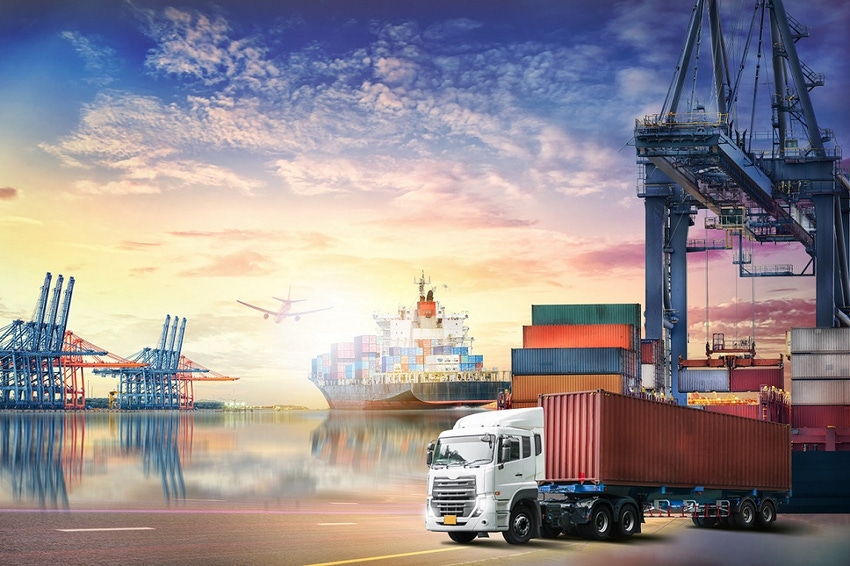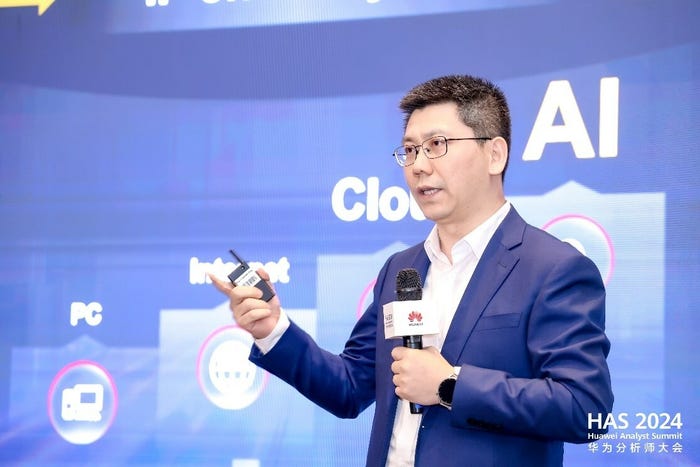In the COVID-19 era, the global supply chain suffers from foundational issues that may be solved only with data-driven solutions.
May 21, 2020

Key Takeaways from This Article:
COVID-19 has unveiled the fragility of a global supply chain predicated on lowest-cost principles.
Increasing supply chain data visibility is a priority for logistics organizations looking to improve resilience.
Supply chain recovery hinges on incorporating robust data analytics and other data-driven tools into business operations to increase efficiency, reduce costs and proactively manage risk.
The COVID-19 crisis has hit the global supply chain from all sides.
Shortages for in-demand products abound, while shipment delays are common and production lines run at a fraction of capacity. Erratic consumer demand adds further dysfunction.
Supply chains will survive COVID-19, of course, but not without interim pain and structural change. Practitioners must develop a data analytics strategy that gives them insight into supply chain aberrations before catastrophe sets in.
“If we’re going to be able to prepare for these types of events in future, we have to identify appropriate sources of information that we should focus on all the time — not just when [crisis] manifests,” said Randy Bradley, associate professor of information systems and supply chain management at the University of Tennessee.
Shortages, consumer hoarding and delays all signal a tipping point.
“We can’t operate the way we have,” said Milind Balaji, a senior supply chain manager at an East Coast manufacturer of toilet tissue, diapers, pulp and other products. “There is just too much risk.”
“We can’t operate the way we have. there is just too much risk.” Milind Balaji, senior supply chain manager, manufacturing
Supply Chain Faces Perfect Storm
Product supply shortages are also contributing to supply chain distress. Many product components are sourced from Asia, which experienced a major slowdown in production in early 2020.
Today, China represents some 16% of global GDP. Many components for electronics, retail and many other consumables are made in China, so the slowdown in production has hamstrung the flow of these goods. Compare China’s share today with 2002, during the SARS epidemic, when China represented only 4% of world GDP.
A second factor is unprecedented shifts in consumer spending. Demand has soared for groceries and toilet tissue but also for products such as Peloton bikes, board games and cleaning supplies. E-commerce increased 49% in April, according to Adobe’s Digital Economy Index, given shuttered brick-and-mortar stores. Meanwhile, restaurants, office parks and entertainment venues have been closed, skewing commercial demand.
Erratic supply and demand have strained logistics as well. Shipping from Asia is delayed by weeks given soft demand for apparel and other products, and some suppliers are turning to the airline industry — with air travel down by 95% — to reduce delays. Trucking delays are rife, and by some accounts, demand for short-haul deliveries has increased 30%.
All these factors have placed a vice grip on a supply chain that was running too lean to withstand the COVID-19 crisis. “We’ve seen how wide and how thin and how at-risk our global supply chains are,” said Guy Courtin, a former analyst at Constellation Research. “All of that works perfectly well when things are OK. But with a black-swan event, it just magnifies the risk.”
For the supply chain to find its footing, practitioners need supply chain data analytics to make it through the other side of the crisis.
“This whole disruption has thrown a lot of focus on supply chain technology — or the digital side of supply chain — which includes not just technology but analytics, processes and methodologies,” said Kumar Singh, a chief analytics adviser at Jagah.AI, a provider of analytics-based warehousing technology.
“We’ve seen how wide and how thin and how at-risk our global supply chains are,” — Guy Courtin, former analyst, Constellation Research
Data Visibility in the Supply Chain
Increasingly, companies recognize that a lean manufacturing approach works only when supply chain participants have full visibility.
Today, many manufacturers lack that awareness. They don’t know how much demand exists, how much supply they have or where their products are once they ship.
“Right now, our biggest problem is visibility,” Balaji said. “We don’t know where things are.”
He said that, today, just-in-time manufacturing has placed pressure on manufacturers to digitize and get their data house in order. To reduce costs and shipping delays, and to optimize inventory, manufacturers like his need to know precisely when, for example, to manufacture boxes that its retailer customer will use to ship the products it sells.
“The box has to go to the product, and the product goes in a box, the box goes to a retailer. No one wants to hold inventory. It’s all exacerbating the need for having systems that can talk to one another, and it also can give people a lot of real-time information.”
Balaji said that the company has worked on two fronts to gain supply chain data visibility. First, it is working on a data consolidation project so that departments speak the same language regarding product supply and whereabouts. Legacy systems couldn’t talk to one another..
[IoT World is North America’s largest IoT event where strategists, technologists practitioners and others connect, putting IoT, AI, 5G and edge into action across industry verticals. Sign up for virtual event updates here.]
Machine Learning for Greater Logistics Insight
Second, Balaji’s company has struggled to locate its products as they were shipped. The maritime industry — 90% of world trade travels by sea — is notoriously manual. Sometimes, the company uses IoT-connected containers on ships, but with COVID-19, many ships encounter several weeks of delay, and many shipments leave port without containers — and, thus, without tracking.
To combat that problem, Balaji said that the company uses Clearmetal, a data analytics logistics service that calculates average logistics times for air, ship, trucking and so on, to estimate delivery times for customers.
“Our customers want to know, ‘Where is my shipment?’ at every step of the way,” Balaji said. “Right now, we can’t really tell that well, so we use machine learning. Our data analytics company, Clearmetal, can take all these routes and analyze them to provide a high level of confidence about when a shipment will arrive.”
Balaji said that the tool also enables the company to plug in factors such as geopolitical environment, natural disasters and so on.
Experts say this is exactly the kind of supply chain data proficiency that companies need to develop. Many companies, for example, have considered drastic revisions to their sourcing strategies to reduce reliance on far-flung regions. But those new sourcing strategies must be informed by an accurate data platform that can conduct risk analysis.
“There are ways to do this analysis in the tool,” Singh said, “putting in numbers on tariffs, landing costs, logistical costs, local labor costs, local geopolitical risks to figure out what is the best network modeling tool to understand what the plans should be and the impact on costs. Using these tools help companies prevent this kind of disruption from happening in the future.”
Control Tower Technology to Enable Supply Chain Control
Another key supply chain data tool, say experts, is control tower technology, which monitors supply-and-demand factors with granularity via a single view in a dashboard. Companies can weigh risks based on multifactor analysis and act on data nearly in real time.
But control tower technology takes time to build and deploy and often involves a considerable learning curves.
“The true control tower technology is going to take time,” Singh said. “Companies have already been dabbling and had some control tower capability in place and are now looking to accelerate that,” he said.
Balaji agreed that deploying, let alone exploiting, control tower technology will take time and stem from external pressures that push manufacturers to improve supply chain data visibility. “That will give them greater confidence in the ability to do business with us,” he said.
Experts say that a thoroughgoing data strategy involves daily supply chain data analysis to support risk management.
“We see some organizations where risk management is part of daily management and others where it’s only part of emergency response,” said University of Tennessee’s Bradley. “But if you only focus on risk management as part of emergency response, it’s already past you.”
“True control tower technology is going to take time.” — Kumar Singh, chief analytics adviser, Jagah.AI
Supply Chain Data Sharing and Blockchain
A third issue, say experts, is the need for greater data sharing and collaboration among suppliers.
“You need greater transparency about where the goods are and where they need to be among suppliers,” Courtin emphasized.
Bradley agreed that most companies have a zero-sum game mentality that augments supply chain problems. “To get to … true supply chain [partnership], we have to be willing to be transparent with one another,” Bradley said.
Blockchain technology, a secure, centralized digital ledger that encrypts data while making information shareable among trusted parties, could aid suppliers in transparency.
Experts say that some suppliers have already begun to use blockchain in the wake of COVID-19 shortages.
“There are already platforms out there that are blockchain-verified,” Singh said. “If you were an auto manufacturer and had a blockchain in place to quickly order parts on demand, having this kind of a setup in place would be very beneficial to avoid a disruption. So blockchain and 3D printing is something that manufacturers should look into,” he said.
Practitioners like Balaji place hope in technologies like blockchain that provide a secure and centralized means of tracking products. And experts say blockchain technology is now up to the task of secure tracking and tracing.
Balaji noted, though, that interest in blockchain has waned over the past year. He acknowledged that that digitization of supply chain data would bring speed and efficiency to company operations, but it might take time for companies to recognize blockchain’s value.
“I’ve been watching it over the past six months,” Balaji said. It’s cratered, or at least plateaued. Maybe people have different priorities.” But, Balaji emphasized, while blockchain has suffered from a lull, digitization and centralization will ultimately bring numerous advantages.
“It will quicken so much of the way we do business,” Balaji said. But today, he emphasized, companies continue to focus on short-term subsistence, not long-term strategy.
“Right now, it’s all about survival,” Balaji said. But organizations managing supply chains should boost their efforts to adapt to digitization and centralization of data. “Yes, we’ll be more efficient in a year, but things like control tower technology? Maybe we thought it was a five-year thing and now it’s a two-year thing. We will be compelled by our customers to do it.”
About the Author(s)
You May Also Like



.png?width=300&auto=webp&quality=80&disable=upscale)


.png?width=300&auto=webp&quality=80&disable=upscale)